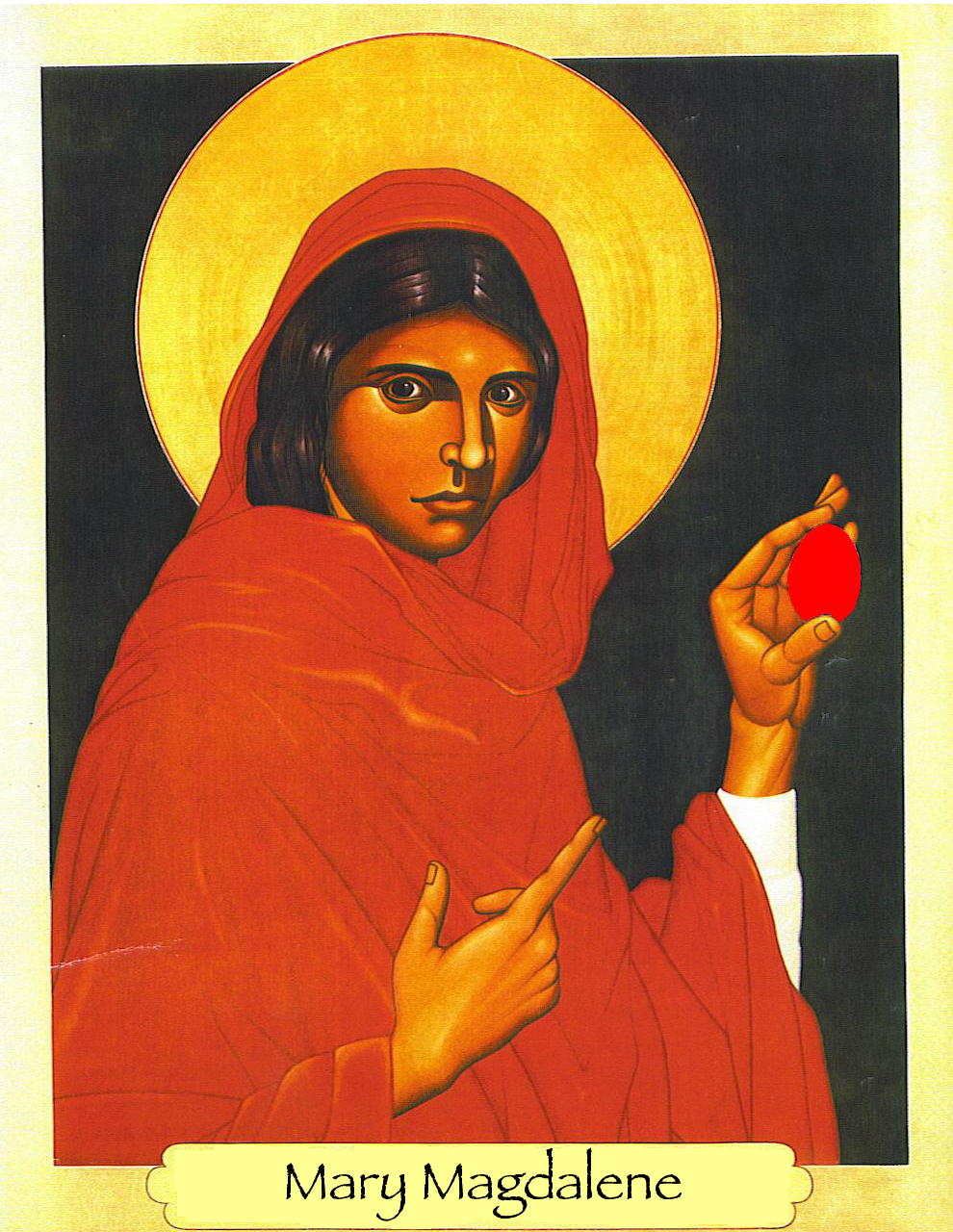by Fr Gabriel-Allan Boyd
Magdala was a small town on the edge of the Sea of Galilee. Today, only a smaller village called, Mejhdel, remains on the site. This Sunday we celebrate the feast day of a woman, a part of whose name reflects this place where she grew up.
The Gospels tell us that Jesus cast seven demons out of her (Luke 8:2). Since that’s the first time we hear from her, her childhood remains a mystery to us. We do know, however, that immediately after the demons were cast out of her, Mary became a most devoted disciple and follower of Jesus.
As Jesus and His Apostles went preaching about “the Kingdom of God” through the cities and villages of Judea and Galilee, Mary followed after Him. She served Him from her own possessions (Luke 8:1-3).
The Gospel relates that Mary Magdalene was also present during the Lord’s Crucifixion. While almost all the rest of our Lord’s disciples ran away, she remained courageously at the Cross, together with the Theotokos and the Apostle John.
The four Gospel writers also intermittently list among those standing at the Cross, the mother of the Apostle James, and Salome, and other women followers of the Lord, but all of them mention Mary Magdalene first. Saint John, in addition to the Mother of God, names only her and Mary Cleopas. This shows how prominent her place was among all the other women disciples of the Lord.
Matthew indicates that she was also present at Jesus’ burial. She watched as the entrance to His tomb was covered with a large stone.
On the third day, according to Jewish custom, she and the other women gathered spices to go to the Lord’s grave at dawn on Sunday and anoint His Body. John tells us that Mary Magdalene, however, was the first one to get there because she left so early, that it was still dark. Seeing that the stone had already been pushed away from the cave, she quickly ran in fear to tell Peter and John. When they heard the strange message that Jesus was no longer in the tomb, both Apostles ran to the cave, discovering to their amazement, that only the burial cloths remained. So, Peter and John left, saying nothing to anyone, but Mary remained near the tomb’s entrance, weeping.
Peering back into the tomb once again, she suddenly saw two angels in white garments, one sitting at the head, the other at the foot, where Jesus’ body had been placed. They asked her, “Woman, why are you weeping?” She answered them with the words which she had earlier said to the Apostles, “They have taken my Lord, and I don’t know where they have laid Him.” Nervously turning around, she saw that another person joined them, the Risen Jesus standing near the grave, but she didn’t recognize Him.
He asked Mary, “Woman, why are you weeping? Who are you looking for?” Thinking that He was the gardener, she asked, “Sir, if you’ve taken him, then tell me where you’ve put Him, and I’ll take Him away.”
When He spoke her name, however, she immediately recognized His voice. This was the voice she’d heard those many times over throughout the years as she’d followed Jesus through all the cities and places where He preached. This was her Rabbi…her Teacher. She threw herself down at His feet to wash them with tears of joy. But He said to her: “Don’t touch me, since I haven’t yet ascended to My Father; but go tell My brethren: “I’m going to ascend to My Father, and your Father; to My God and to your God.”
Obeying His command to preach the Good News, she again ran to the Apostles. Running into the house, where the Apostles still sadly remained, she proclaimed the joyous message to them, exclaiming, “I have seen the Lord!” This was the first preaching in the world about the Resurrection…her telling of her encounter with the Risen Lord.
While the Apostles proclaimed the Good News to the world, she was the first to proclaim it to the Apostles themselves.
According to the Church’s Holy Tradition, when the Apostles departed from Jerusalem to preach to all the ends of the earth, Mary Magdalene also went with them. Since she kept the memory of Christ’s Resurrection so joyfully on her heart, she went beyond her native borders, even to preach that message in pagan Rome. Wherever she went she proclaimed Christ and His teaching to the people she met. When some were skeptical of Christ’s Resurrection, she repeated to them the same words she had previously told the Apostles: “I have seen the Lord!” She took this message all over Italy.
When Mary Magdalene finally visited Emperor Tiberias in Italy, she told him that in his Province of Judea the unjustly condemned Jesus, the Galilean, a holy and powerful miracle-worker…anointed by God, had been executed. Then she proclaimed the Resurrection to him. According to Tradition, she brought him a red egg as a symbol of the Resurrection, a symbol of new life with the words: “Christ is Risen!”
Thanks to Mary Magdalene, the custom to give each other red eggs on Pascha is celebrated by Christians over all the world. This has become a custom from the very time of the Apostles, when Mary Magdalene first showed believers this example of the joyful offering.
Mary Magdalene continued on with her preaching throughout Italy and most especially in the city of Rome until the arrival of the Apostle Paul. From Rome, Saint Mary Magdalene, already bent with age, moved to Ephesus to be near the Apostle John. There she finished her earthly life and was buried.
Eventually, her holy relics were transferred to Constantinople. In the era of the Crusader campaigns, they were taken to Italy and placed in Rome. Some of Mary Magdalene’s relics were also taken to Provage, France, where a glorious church was built in her honor.
In the Orthodox Church, we give special honor to Saint Mary Magdalene, the woman whom the Lord Himself called from darkness to light, and from the power of Satan to God. After receiving healing, she never wavered from the path of serving Him. She was faithful to Him not only when He was surrounded by enthusiastic crowds and winning recognition as a miracle-worker…but also when all the disciples deserted Him in fear, as He was humiliated and crucified, and hung in torment upon the Cross. This is why the Lord, knowing her faithfulness, appeared to her first, and esteemed her worthy to be first to proclaim His Resurrection. This is why the Church refers to this Holy Myrrh-bearer as Equal to the Apostles.



